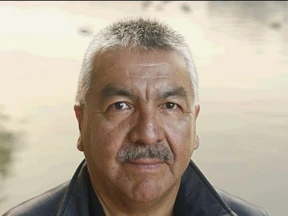
The image of Chelsey Quaw is featured in a photograph sourced from her Facebook page.
The Independent Investigations Office (IIO) in British Columbia is examining the circumstances surrounding the death of an unnamed woman from the Saik'uz First Nation, whose body was discovered on November 5, approximately a kilometer from where she was last seen alive almost a month earlier. Although the IIO hasn't disclosed the woman's identity, the details align with those of 29-year-old Chelsey Quaw (Heron), reported missing after leaving her residence in Saik'uz on October 11.
The deceased, who had recently relocated to Saik'uz to stay with her father and siblings, prompted concerns from family and local leaders during her disappearance. Allegations surfaced that the case was receiving insufficient attention from the police, public, and media due to her Indigenous background.
Despite the police initiating a comprehensive investigation into Quaw's disappearance, no progress was made until nearly a month later. On November 6, the RCMP announced the discovery of Quaw's body in a wooded area within the community, which houses an on-reserve population of approximately 400 people.
Concurrently, both the police and the B.C. Coroners Service are conducting parallel investigations into the cause of Quaw's death. The IIO, an agency summoned when there are suspicions of police involvement in serious harm or death, is now scrutinizing the police's role in the case.
During a public meeting convened by the Saik'uz First Nation on November 3, leaders from Saik'uz and the Highway of Tears Governing Body urged the RCMP to bring in additional external resources to support local search efforts. The Highway of Tears Governing Body, established in 2006, addresses cases of missing or murdered women and girls, many of whom are Indigenous, along Highway 16 between Prince George and Prince Rupert.
Expressing dissatisfaction with RCMP efforts after Quaw's discovery, Mary Teegee, a leader within the organization, criticized the lack of additional resources deployed in the search. She questioned the differential response, asking why there were no RCMP helicopters, dogs, or more personnel on the ground, and highlighting the disparities in response based on racial and geographical factors.
In response to these concerns, the RCMP asserted that all available resources, including air services, police dogs, and search and rescue teams, were promptly deployed on the day of Quaw's disappearance. RCMP North District spokesperson Cpl. Madonna Saunderson expressed confidence that all investigative avenues were explored before Quaw's discovery, emphasizing the commitment to locating her safely.
Staff Sgt. Kris Clark, B.C.'s senior RCMP media relations officer, reiterated the primary focus on the safety and well-being of missing persons, irrespective of their race or gender. The IIO's ongoing investigation seeks to shed light on the circumstances surrounding the woman's death and the role, if any, played by the police in this tragic incident.















